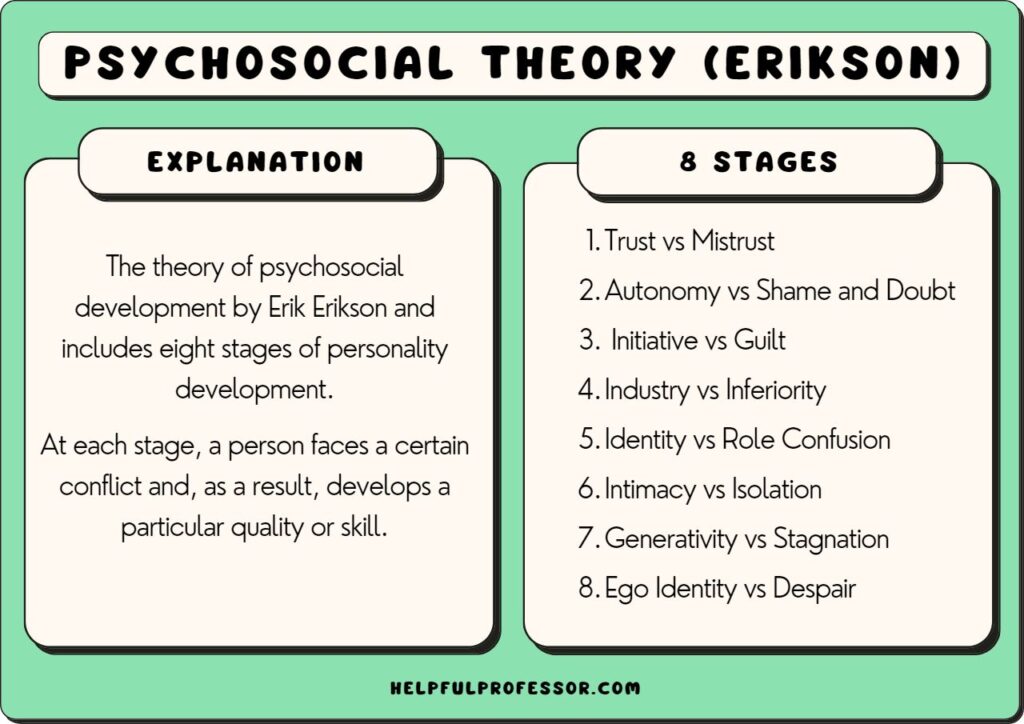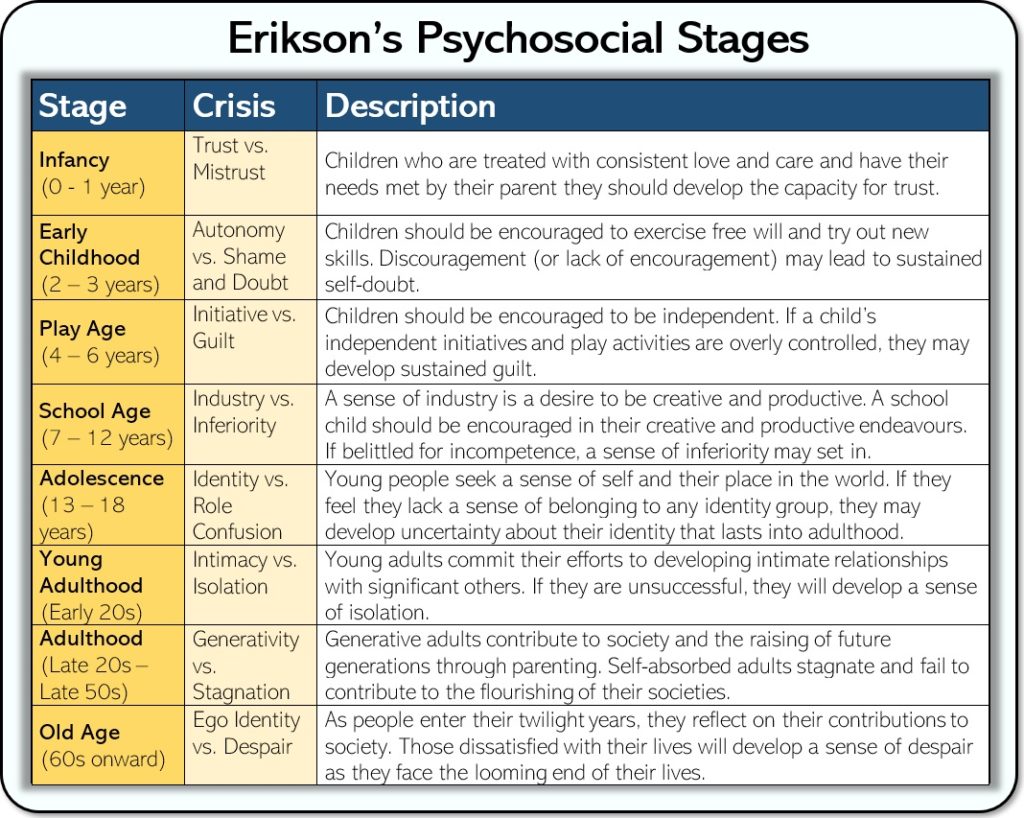

Written by Viktoriya Sus (MA)

Viktoriya Sus is an academic writer specializing mainly in economics and business from Ukraine. She holds a Master’s degree in International Business from Lviv National University and has more than 6 years of experience writing for different clients. Viktoriya is passionate about researching the latest trends in economics and business. However, she also loves to explore different topics such as psychology, philosophy, and more.
| May 26, 2024
Reviewed by Chris Drew (PhD)

This article was peer-reviewed and edited by Chris Drew (PhD). The review process on Helpful Professor involves having a PhD level expert fact check, edit, and contribute to articles. Reviewers ensure all content reflects expert academic consensus and is backed up with reference to academic studies. Dr. Drew has published over 20 academic articles in scholarly journals. He is the former editor of the Journal of Learning Development in Higher Education and holds a PhD in Education from ACU.


The theory of psychosocial development was invented by the famous American psychologist Erik Erikson and includes eight stages of personality development.
At each stage, a person faces a certain conflict and, as a result, develops a particular quality or skill.
According to Erikson, all people go through eight crises or conflicts in their development. Psychosocial adaptation achieved by a person at each stage of development can change their character at a later age, sometimes radically.
For example, children who were deprived of love and warmth in childhood can become normal adults if they are given additional attention at later stages.
However, the nature of psychosocial adaptation to conflicts plays an important role in developing a specific person.
The resolution of these conflicts is cumulative, and the way a person adapts to life at each stage of development affects how they cope with the next conflict.
Contents showErik Erikson’s psychosocial development theory is a framework that explains how individuals develop and grow throughout their lifespan.
According to Erikson, human development is a process in distinct discontinuous stages, each characterized by a particular psychosocial crisis or challenge (Orenstein & Lewis, 2021).
In the book Childhood and Society, Erikson (1963) divided a person’s life into eight separate stages of psychosocial development of the “ego.” These stages are the result of an epigenetically unfolded personality blueprint that is passed down genetically.
According to Moore and Rosenthal (2007),
“Erikson postulates that psychological development proceeds through a series of stages across the life span, each stage characterized by a major crisis or conflict to be worked through and resolved” (p. 33).
The epigenetic concept of development is based on the idea that each life cycle stage occurs at a specific time (“critical period”) and that a full-fledged personality is formed only by successively passing through all stages in its development.
In addition, each psychosocial stage is accompanied by a crisis – a turning point in an individual’s life, which occurs due to reaching a certain level of psychological maturity and social requirements presented to the individual at this stage (Erikson, 1963).
So, in simple terms, Erikson’s psychosocial development theory is a framework for understanding how individuals grow and develop throughout their life span, each stage of which is characterized by a particular psychosocial challenge or crisis.
It emphasizes the importance of successfully resolving these conflicts to move on to the next stage and ultimately achieve a full-fledged personality.

Erik Erikson’s theory of psychosocial development outlines eight stages that individuals go through from birth to old age.
Each stage represents a unique psychological challenge or crisis that must be resolved to achieve healthy development (Erikson, 1963).
Age Range: Infancy, 0-1 year
Key Challenge: Developing trust for caregivers
Core Question: “Can I trust the people around me?”
During this stage, infants learn to trust or mistrust their caregivers based on the consistency and reliability of their care.
Responsive caregiving, positive reinforcement, a safe environment, positive experiences, and supportive parents can help a child succeed in the trust vs. mistrust stage of development (Erikson, 1963).
The successful development of trust during the infancy stage can have a more positive outlook in adult life, can help develop self-esteem, and build healthy relations.
Without the proper encouragement and development, a child can become highly distrustful due to unstable caregiving, negligence, mistreatment, separation issues, or even excessive protection (Erikson, 1963).
The failure to develop trust during infancy can have significant consequences on a child’s psychological and emotional development, leading to issues such as anxiety, depression, and even aggression.
Age Range: Toddlerhood, 1-3 years
Key Challenge: Seeking autonomy and discovery
Core Question: “Can I do things myself, or am I reliant on the help of others?”
As toddlers enter this stage, they start to yearn for more autonomy and discover the world around them.
Parents’ encouragement, support, and freedom to make choices are critical factors in helping children successfully transition through the autonomy vs shame and doubt stage (Lewis & Abell, 2017).
The successful development of autonomy in children helps them increase confidence, gain independence, and have better relationships with others at a small age and in adult life (Slee et al., 2012).
A child can become less autonomous and develop feelings of shame and doubt if they are not allowed to make decisions on their own, have overly controlling parents, have stressful events, or even lack of support (Erikson, 1963).
The inability to develop autonomy can lead to a child’s lack of confidence and poor social skills or even create a negative self-image.
Age Range: Preschool, 3-6 years
Key Challenge: Developing initiative
Core Question: “Am I good or bad?”
Children begin to develop a sense of purpose and initiative during this stage. They begin to tap into their sense of power and control by taking charge during playtime and other social interactions
A supportive environment, encouragement of independence, and support for creativity are all critical factors for a child to succeed at the initiative vs. guilt stage (Erikson, 1963).
When children develop initiative, they can increase their self-esteem, improve problem-solving skills, gain greater independence, better academic performance, and even improve physical health.
Criticism and punishment, lack of opportunities and encouragement, overprotective parenting, fear of failure, and traumas are among the factors that can cause children to fail at the initiative vs. guilt stage (Erikson, 1963).
When parents fail to develop their child’s initiative, the consequences can range from negative to serious. These include a lack of self-confidence and independence, poor academic performance, anxiety, and depression.
Age Range: Elementary School, 6-12 years
Key Challenge: Developing Industriousness
Core Question: “How can I be good?”
In this stage, children develop a sense of competence and mastery in academic and social skills.
A supportive environment, encouragement of creativity, recognition of effort, and freedom to explore interests are all critical factors for a child to succeed at the industry vs. inferiority stage (Erikson, 1963).
By fostering an attitude of hard work and ambition, adults can give kids the tools to embrace confidence and resilience. With these skills, children will be better prepared to take on any challenge, paving their path to success.
Lack of a supportive environment, poor academic performance, bullying, and limited exposure to new activities can all be contributing factors for children not succeeding in the industry vs. inferiority stage (Erikson, 1963).
Failing to establish the capabilities and frame of mind required for success in the industry versus the inferiority stage can lead a child to experience serious issues, including decreased self-confidence, social troubles, and academic difficulties.
Age Range: Adolescence, 12-18 years
Key Challenge: Developing a sense of personal identity
Core Question: “Who am I?”
During this stage, adolescents form their identity and sense of self by exploring and ‘trying on’ different identity roles.
Positive role models, encouragement to be an independent, safe and supportive environment, open communication, and freedom to express themselves are important factors that can help children to succeed at the identity vs role confusion stage (Erikson, 1963).
The successful development of identity during the identity vs role confusion stage can help improve self-esteem, build stronger interpersonal relationships, improve physical health, increase creativity, and even improve academic performance.
Lack of support, negative role models, traumas, social pressure, or mental health problems could all contribute to an inability to successfully transition into adulthood (Erikson, 1963).
Without developing a robust sense of identity, one may experience a loss of direction and purpose in life, find it hard to build meaningful connections with others, or simply be unable to decide on the right career path.
Age Range: Young Adulthood, 18-40 years
Key Challenge: Developing caring intimate relationships
Core Question: “Will I be loved, or will I be alone?”
Individuals strive to form meaningful connections and intimacy with others at this stage. This can be romantic relationships, friendships, and professional partnerships.
During the intimacy vs isolation stage of life, it is crucial to cultivate supportive relationships and possess attributes such as emotional intelligence, empathy, a willingness to compromise, and trust for someone to succeed (Erikson, 1963).
Establishing meaningful connections has a host of positive implications for one’s emotional and physical well-being, personal growth, and overall life satisfaction. Intimacy paves the way to lead an enriched life.
Lack of trust, difficulty communicating, social isolation, traumas, and some other personal issues can hinder the development of intimacy in relationships (Erikson, 1963).
If neglected, the intimacy vs isolation stage can result in loneliness and trouble forming meaningful relationships. Furthermore, it can lead to a fear of rejection and a detrimental effect on one’s physical health.
Age Range: Middle Adulthood, 40-65 years
Key Challenge: Giving back to the community
Core Question: “How can I contribute to the world?”
At this phase of life, people strive to give back to their community and leave a lasting impression on future generations.
Positive relationships, emotional stability, a sense of accomplishment, self-reflection, and financial security are several factors that can contribute to an individual’s success at the generativity versus stagnation stage (Erikson, 1963).
The success of developing generativity can have positive consequences for both the individual and society as a whole – from creating fulfillment in life and improving health to making the world better.
People’s self-centeredness, lack of personal growth and meaningful relationships, fear of failure, and even lack of resources significantly impact their ability to develop generativity, thus, leading to stagnation (Erikson, 1963).
The failure to develop generativity during the middle adulthood stage can lead to feelings of stagnation and a lack of fulfillment in life. Such people may experience a sense of purposelessness and feel disconnected from the world around them.
Age Range: Late Adulthood, 65+ years
Key Challenge: Sense of fulfillment
Core Question: “Did I live a meaningful life?”
During this stage, individuals reflect on their life choices and must come to terms with the purpose of it all.
Healthy relationships, meaningful work, forgiveness, contributions to society, and a positive attitude can all help individuals succeed in the integrity vs despair stage (Erikson, 1963).
The success of developing integrity has several positive consequences for individuals, such as a sense of accomplishment, increased self-awareness, better mental health, a greater sense of purpose, and enhanced relationships.
Lack of meaningful relationships and accomplishment, illness or disability, isolation, mental health issues, and difficulty with self-awareness can all contribute to an individual’s failure in the integrity vs despair stage (Erikson, 1963).
The consequences of failing to develop integrity during the later stages of life can result in feelings of despair, regret, and dissatisfaction, which can lead to a sense of hopelessness and a negative outlook on life.
While Erikson’s Psychosocial Development Theory has been widely influential in the field of psychology, it has also received its fair share of criticism related to its lack of empirical evidence and theoretical rigor.
Psychosocial theory is inspired by Freud’s psychoanalytic theory. However, Erikson’s approach takes on a more rational and positive framing.
Whereas Freud focuses on the subconscious mind and sexual desire, Erikson focuses on our social lives. His goal is to explore how people develop a productive sense of self rather than being overly focused on our internal demons.
Here is a summary of the differences between the two theories:
| Psychosocial Theory | Psychoanalytic Theory | |
| Founder | Erik Erikson | Sigmund Freud |
| Focus | Developmental stages and life transitions | Unconscious conflicts and early childhood experiences |
| Development | Emphasizes the lifelong nature of development | Emphasizes early childhood experiences and their impact |
| Personality | Considers both conscious and unconscious aspects | Focuses on the unconscious and irrational aspects of the self |
| Stages | Considers eight stages of development | Focuses on five psychosexual stages of development |
| Identity | Emphasizes the development of a stable identity | Emphasizes the resolution of unconscious conflicts |
| Culture | Emphasizes the impact of culture and society on identity | Emphasizes the individual’s inner conflicts and experiences |
| Therapy | Emphasizes problem-solving and personal growth | Emphasizes the exploration of the unconscious mind |
Erik Erikson’s theory is centered around the growth of self-identity, explored them in his influential 1968 book Identity: Youth and Crisis. Likely, personal experiences played a significant role when formulating psychosocial development theory.
Erik Erikson (Homberger), born of an unknown Danish father and a Jewish mother, was subjected to taunts from his peers during his youth due to the juxtaposition of his Nordic appearance with a Jewish upbringing (Carley, 2015).
As he roamed in search of purpose, Erik pursued a dream to become an artist. But the onset of World War II forced Erikson and his wife to relocate multiple times until ultimately settling in Boston.
During his travels, he changed his name to reflect the constant transformation of identity that he was experiencing himself – an idea that is ubiquitously found throughout all his theories on personal development.
Erikson had many anthropology associates, such as Ruth Benedict, Gregory Bateson, and Margaret Mead. Yet none impacted him as much as Sigmund Freud did with his ideas and theories.
Taking inspiration from Freud’s work, Erikson has expanded upon the latter’s theories and crafted a unique set of his own (Carley, 2015).
Whereas Sigmund Freud proposed five stages in human development that culminate in adolescence, Erik Erikson formulated eight foundational phases.
Freud believed that a person’s childhood is the fundamental cornerstone of their identity, while Erikson argued that personal development continues to progress and evolve over one’s lifetime. This growth even can be seen in late adulthood.
Before his first publication of Childhood and Society, Erikson immersed himself amongst Native American tribes (Carley, 2015).
There, he discovered dream quests – a hunt for boys reaching adulthood – and saw how their traditional identities were being dissolved by modern white practices.These observations also influenced Erikson’s view of psychosocial development theory.
He felt that the identity crisis and dissonance Native American boys experienced could be found in young people of all societies – a notion that is highly celebrated today.
According to Erik Erikson’s theory of personality development, personality development continues throughout life, where one stage is replaced by another in the event of a successful resolution of internal contradictions.
The eight stages of psychosocial development involve identity formation, the ability to form intimate relationships, generativity, and ego integrity. They also provide an understanding of how experiences throughout life can affect development.
Erik Erikson was a follower of Freud. He expanded the psychoanalytic theory and went beyond it because he began to consider the child’s development in a wider system of social relations.
Today, Erikson’s eight stages of psychosocial development theory is a major contribution to the field of psychology that has been widely influential.
However, it has also generated much criticism due to its lack of empirical evidence and theoretical rigor.
Carley, S. G. (2015). Erik Erikson: Post-Freudian theory. Createspace.
Erikson, E. H. (1963). Childhood and society. Vintage Digital.
Erikson, E. H. (1968). Identity: Youth and crisis. W.W. Norton & Co.
Moore, S., & Rosenthal, D. (2007). Sexuality in adolescence: Current trends. Routledge.